SAP SD
Filter By
Browse By
- SAP Analytics and AI
- SAP Application Development and Integration
- All SAP Application Development and Integration
- SAP ABAP
- SAP ABAP Development Tools
- SAP ABAP Test Cockpit
- SAP API Management
- SAP BAPI
- SAP Basis
- SAP BRF
- SAP Business Application Studio
- SAP CMS
- SAP Design Studio
- SAP Development Tools
- SAP DevOps
- SAP EAI
- SAP EDI
- SAP Extension Suite
- SAP Fiori
- SAP Fiori Elements
- SAP Integration Suite
- SAP Low Code Application Development
- SAP Low Code Automation
- SAP Netweaver
- SAP Release Management
- SAP UI5
- SAP Web Application Server
- SAP Web IDE
- SAP Business Process Management
- SAP Center of Excellence
- SAP CIO
- SAP Customer Experience
- SAP Data and Data Management
- All SAP Data and Data Management
- SAP BW
- SAP BW/4HANA
- SAP Crystal Reporting
- SAP Data Archiving
- SAP Data Center
- SAP Data Governance
- SAP Data Integration
- SAP Data Migration
- SAP Data Quality
- SAP Data Services
- SAP Data Strategy
- SAP Data Visualization
- SAP Data Warehouse Cloud
- SAP DMS
- SAP Document Control
- SAP EIM
- SAP ETL
- SAP ETL Tools
- SAP HANA
- SAP HANA Administration
- SAP HANA Deployment Infrastructure
- SAP HANA Studio
- SAP Master Data
- SAP Master Data Governance
- SAP MDM
- SAP Enterprise Architect
- SAP Enterprise Asset Management
- SAP ERP
- SAP Finance
- All SAP Finance
- SAP Accounting
- SAP AR AP
- SAP Asset Accounting
- SAP Billing Systems
- SAP BPC
- SAP BRIM
- SAP Cash Management
- SAP Central Finance
- SAP Controlling
- SAP COPA
- SAP Cost Center Accounting
- SAP e-invoicing
- SAP FICO
- SAP Finance Automation
- SAP Financial Closing Cockpit
- SAP Financial Consolidation
- SAP Financial Planning
- SAP FX Risk
- SAP General Ledger
- SAP Global Tax Management
- SAP Hyperion
- SAP Order to Cash
- SAP Payment Processing
- SAP Profitability Analysis
- SAP Rebate Management
- SAP S/4HANA Finance
- SAP Universal Journal
- SAP Governance Risk and Compliance
- SAP Human Capital Management
- SAP Intelligent Technologies
- SAP Platform and Technology
- All SAP Platform and Technology
- SAP Business Technology Platform
- SAP Cloud Connector
- SAP Cloud Integration Platform
- SAP Cloud Migration
- SAP Cloud Platform
- SAP Cloud Providers
- SAP Cloud Strategy
- SAP Container Platform
- SAP Digital Asset Management
- SAP Digital Integration Hub
- SAP Digital Signature
- SAP HANA Enterprise Cloud
- SAP HEC
- SAP Hyperscalers
- SAP Infrastructure
- SAP Messaging
- SAP Smart Forms
- SAP Quality and Testing
- SAP Security
- SAP Spend Management
- SAP Supply Chain Management
- All SAP Supply Chain Management
- SAP APO
- SAP Asset Management
- SAP Business Network
- SAP Digital Manufacturing Cloud
- SAP Digital Twin
- SAP EWM
- SAP IBP
- SAP Inventory Management
- SAP Label Printing
- SAP Logistics
- SAP Manufacturing
- SAP Manufacturing Automation
- SAP MES
- SAP MII
- SAP MM
- SAP MRO
- SAP MRP
- SAP Order Management
- SAP Plant Maintenance
- SAP PLM
- SAP Production Planning
- SAP S&OP
- SAP SD
- SAP SPM
- SAP Supply Chain Planning
- SAP Track and Trace
- SAP Transportation Management
- SAP System Administration
What Are Sales and Distribution (SD)
Sales and distribution refer to the supply chain processes involved in selling and distributing products to customers. Those processes include order processing, warehousing, shipping, invoicing, customer service, handling of returns, and the like.
SAP Core Functional Module
SAP offers its SAP Sales and Distribution (SAP SD) core functional module as part of SAP ERP Central Component (ECC). The module is part of SAP ECC’s logistics function and integrates with other modules, including materials management (MM), plant maintenance (PM), production planning (PP), quality management (QM), financial accounting (FI), controlling (CO), and human resources (HR).
Key components of the SAP SD module:
What Are Sales and Distribution (SD)
Sales and distribution refer to the supply chain processes involved in selling and distributing products to customers. Those processes include order processing, warehousing, shipping, invoicing, customer service, handling of returns, and the like.
SAP Core Functional Module
SAP offers its SAP Sales and Distribution (SAP SD) core functional module as part of SAP ERP Central Component (ECC). The module is part of SAP ECC’s logistics function and integrates with other modules, including materials management (MM), plant maintenance (PM), production planning (PP), quality management (QM), financial accounting (FI), controlling (CO), and human resources (HR).
Key components of the SAP SD module:
- Master data
- Sales
- Shipping of material
- Billing
- Sales support
- Transportation of products
- Foreign trade
Key Considerations for SAPinsiders
- Improve Your Company’s Revenues with ATP in Sales Using SAP SD. Are you familiar with how to calculate available-to-promise (ATP) quantity? ATP is calculated from the warehouse stock, the planned inward movements of stock, and the planned outward movements of stock. This article explores the processes involved in sales using ATP functionality. “An Available-to-Promise (ATP) check is performed dynamically for each transaction (i.e., warehouse stock, inward and outward movement of stocks), taking into account the relevant stock and planned goods movements with or without replenishment lead time,” writes author Dr. Gaetano Altavilla, Senior SAP Practice Manager.
- Streamline Invoice Processes and Improve Customer Relationships by Implementing SAP SD Retroactive Billing. This article explores the implementation of retroactive billing using SAP SD and SAP logistics execution shipping within SAP ECC 6.0. If your customer pricing needs updating at the end of the fiscal year, configure retro-billing across modules in your ERP using the steps highlighted within this piece. Adjust posted invoices to reflect new prices while also monitoring the process. “The retro-billing process also produces a history of sales orders and the effects that the changes have on your customer accounts. This information can be invaluable to your organization,” writes Altavilla.
Vendors in the sales and distribution space include: Kern AG, Liquid Analytics, and Long Business Systems, Inc. (LBSI).
5 results
-

Improve Your Company’s Revenues with ATP in Sales Using SAP SD
Published: 30/December/2017
Reading time: 22 mins
Learn about the processes involved in sales using Available-to-Promise (ATP) functionality. Read details about the main master data to be maintained in the system along with the main customizing settings available for this solution. Key Concept The Available-to-Promise (ATP) quantity is calculated from the warehouse stock, the planned inward movements of stock (production orders, purchase...…
-

Create a Prototype Fiori Application to Track Sales Orders
Published: 11/April/2017
Reading time: 12 mins
Learn how to develop prototypes of SAP Fiori applications with Build. Discover how to enter comments and interact with the prototype before developing applications in SAP Fiori. Key Concept An application prototype allows an organization to communicate, discuss, and define ideas between the designers and the user. SAP Fiori allows a very wide design experience,...…
-

4 Steps to Develop a Point of Sales (POS) with SAP Screen Personas 3.0
Published: 31/October/2016
Reading time: 14 mins
Learn how to make adjustments to the Create Sales Order transaction (transaction code VA01) using SAP Screen Personas 3.0. See how SAP Screen Personas 3.0 helps make the process of inputting values for a point of sale (POS) order faster and more intuitive than completing this process in a standard SAP system Key Concept The point...…
-
-

How to Set Up and Use a Sales Document with the Option of Immediate Delivery in SAP S/4HANA
Published: 05/July/2016
Reading time: 10 mins
Learn how to make a business cycle with the sales document set for immediate delivery by configuring settings in SAP S/4HANA. This activity decreases the number of steps in the processes and saves time in supply chain execution. This cycle is very useful in cash sales. Key Concept Cash sales is an order type for...…
-

Make the SEM Management Cockpit More Useful with Drill-Down Configuration
Published: 15/February/2004
Reading time: 7 mins
SEM’s Management Cockpit (MC) creates easy-to-use graphics that display data of all types. While most executives want to see the summarized data that the cockpit displays so well, they also want to be able to examine the details of that data. The author explains how to use a little known piece of functionality that allows...…
Featured Experts
-

Clifford Seckman
President, Virginia Software Group, Inc.
-

Sparsh J Varsani
SAP Consultant
-

Carles Lamas Martinez
PARTNER, CUVIV BUSINESS SERVICES SL
Become a Member
Unlimited access to thousands of resources for SAP-specific expertise that can only be found here.
Upcoming Events
-

SAP TechEd on Tour, powered by Mastering SAP
November 12 - 14, 2025
Sydney, New South Wales
Australia
View Event
Related Vendors
Your request has been successfully sent

